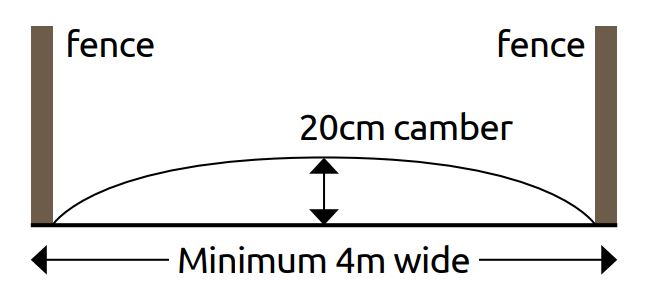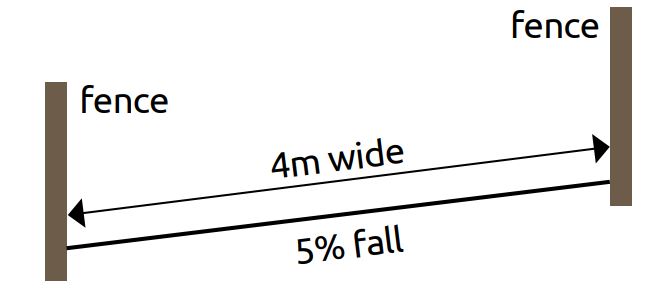- Home
- Knowledge library
- Designing and building a cow track
Designing and building a cow track
To give your new cow track the best chance of success, there are a few things to keep in mind when designing and building it. Work through our checklist of considerations to make sure you’re constructing an effective and long-lasting track.
Checklist for designing and building a cow track
Topsoil
Unlike for machinery tracks, there’s no need to strip off topsoil before laying a new cow track. However, topsoil should be stable and compacted and areas which are prone to being water-logged should be avoided.
Length
If you need to compromise on the length of track, the length nearest to the field opening could be left as grass only, as it will only be used twice every 21 days at most.
Material
You may need to use a more substantial material for the stretch leading to the parlour or yard, but beware that stones from the track can transfer onto the concrete floor, which increases the chance of sole damage.
Depth
Tracks sink over time, so it’s important to build them up well at the start.
Compaction
Build the body of the track in 150 mm layers and use a method of compaction that will increase track durability and lifespan, such as a vibrating roller.
Camber
The camber should be 3–6% (maximum 10%), free-draining and exposed to the wind and sun for quick drying.
The diagram below shows a cross-section of a track using the proud crown design, with a camber appropriate to its 4 m width.
Fencing
Place fences so that they won’t interfere with maintenance tasks or affect cows walking along the edge of the track.
The diagram below shows the location of fencing to ensure cows have access to the full width of the track and to take advantage of a natural slope for drainage.
Ditches
Make edges steep in ditches to stop verges forming. Where ditches are positioned alongside the track, additional wire can be used to ensure that cows stay on the track and avoid the ditches.
Drainage
If necessary, construct cross drains to carry run-off into existing drains on the edge of the track. Ensure this is diverted off the track and not onto lower areas of the track or into watercourses.
Where the track is located across a slope, natural drainage can be achieved with a 5% fall across the width of the track.
Slope
Installing cross drains or sleeping policemen is essential on sloping tracks where run-off is an issue or where a track leads onto a highway.
You can also link drains with a sediment trap to prevent excess run-off from contributing to localised flooding.
Useful links
Find out about the advantages of cow tracks
Learn how cows behave on a cow track
Find out what to consider when planning your cow track route
Learn about materials for your cow track
Find out more about maintaining a cow track
Learn about draining your cow track
Find out how to calculate cow track costs
Learn how to fence a cow track
View the latest Cow tracks and herding guide
We have a number of technical resources for you to use on farm and in the office.
To order a hard copy of Cow tracks:
- Email: publications@ahdb.org.uk
- Telephone: 0247 799 0069
- Fill out our online form



